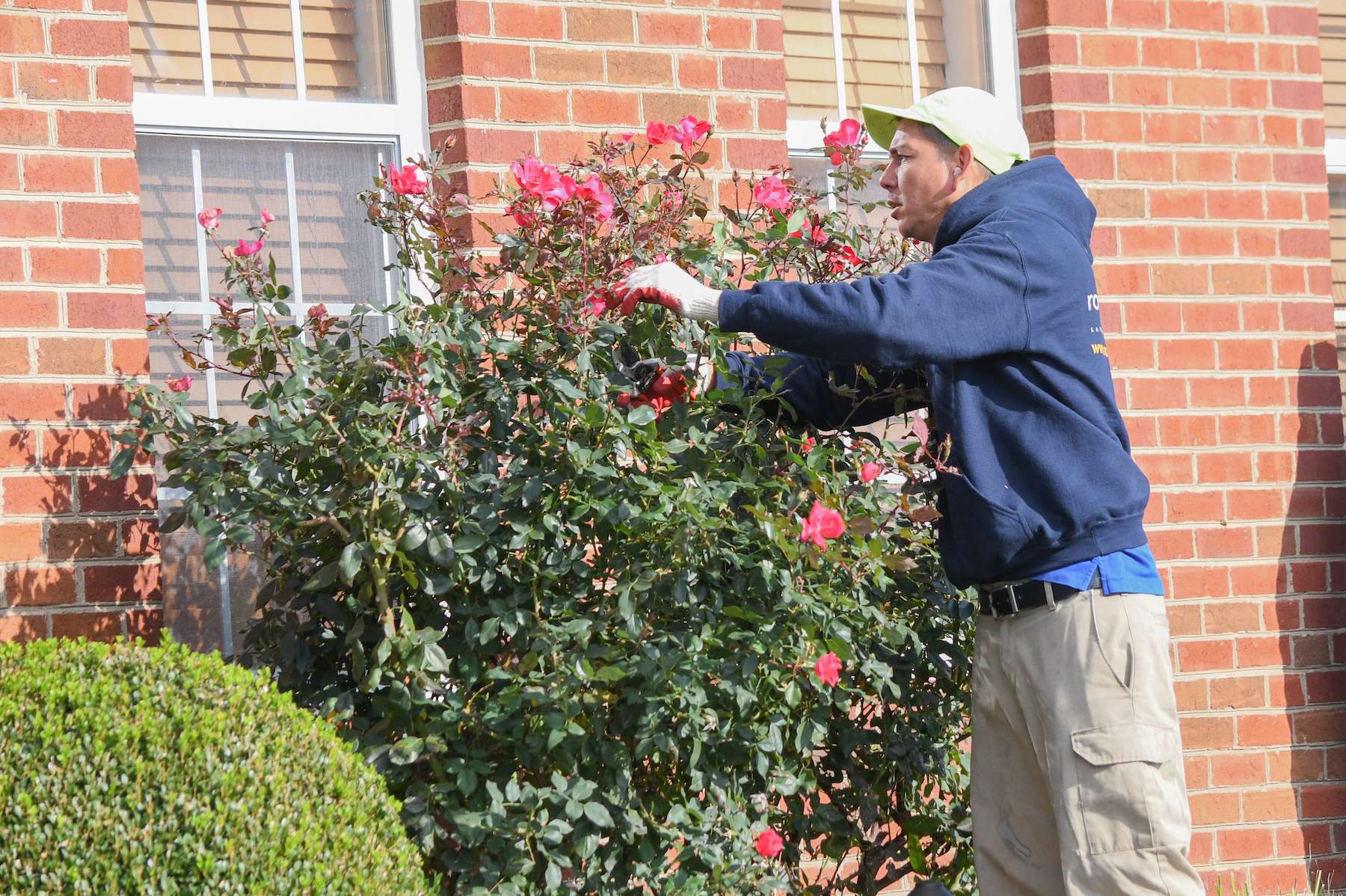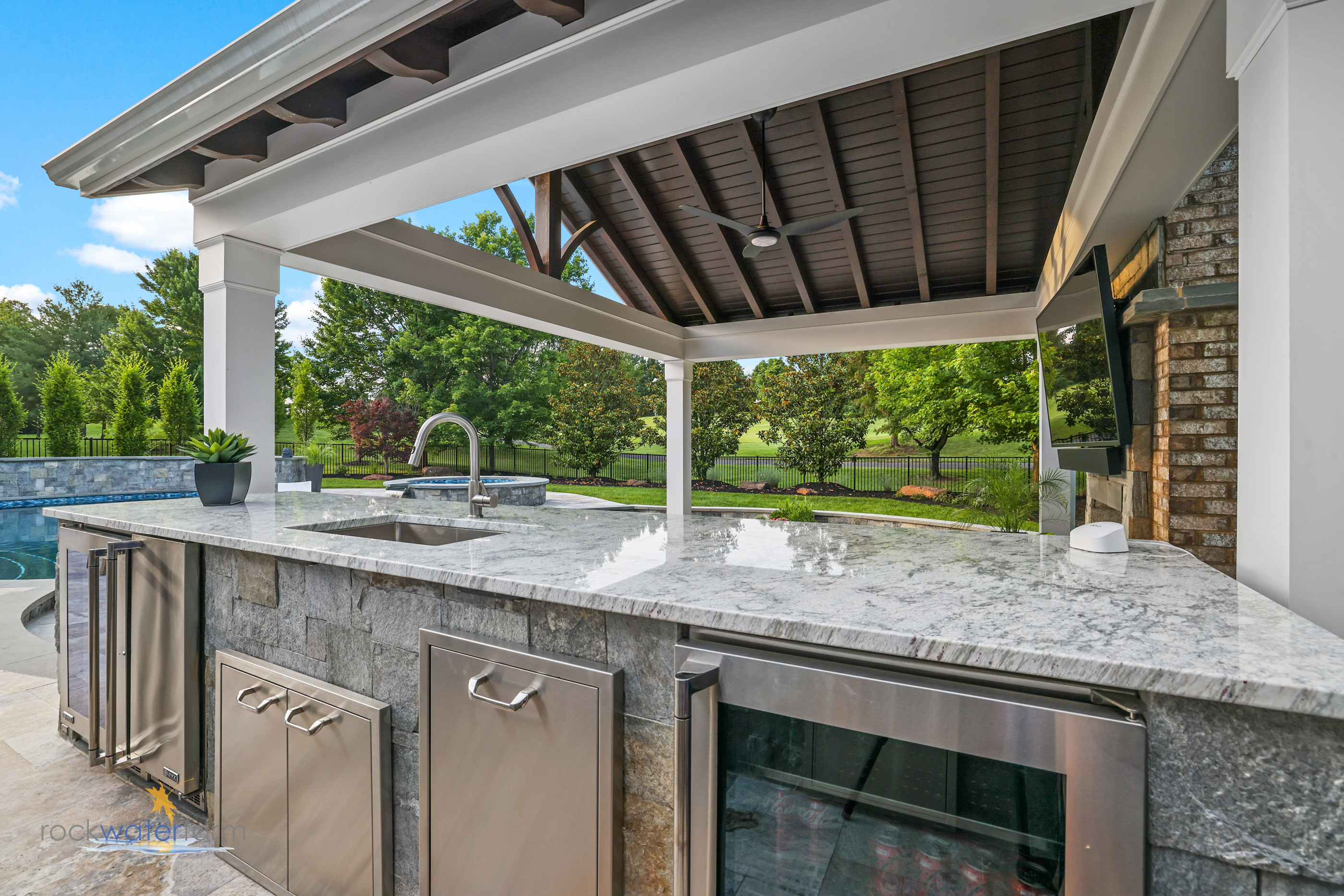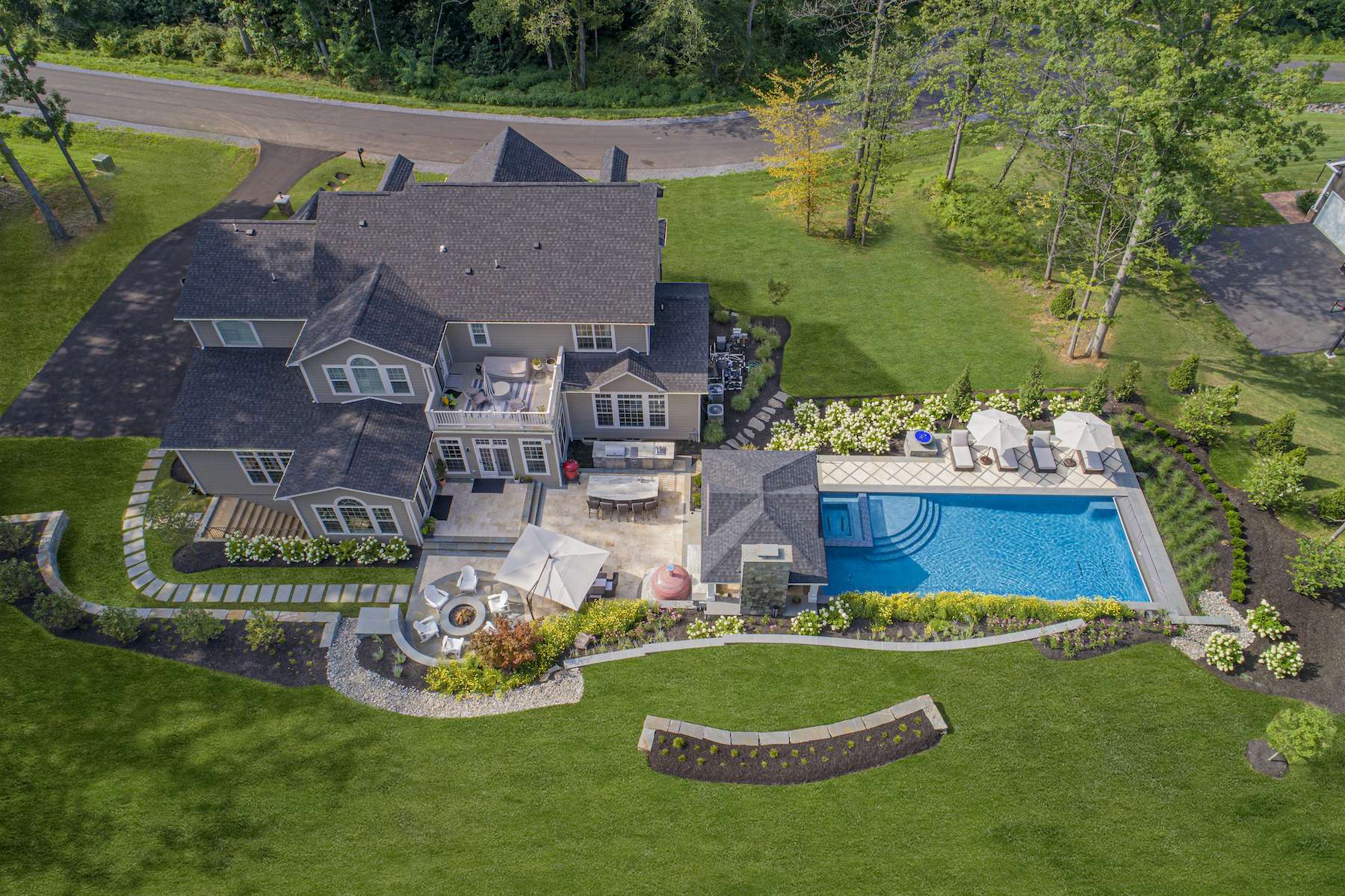Standing water in your landscape beds can cause a number of unwanted problems. These areas can become breeding hot spots for mosquitoes, cause water-logged plants that don’t perform well, and create conditions where diseases can run rampant. It can also make your plant bed areas a muddy mess.
In order to encourage healthier conditions, improving landscape bed drainage is critical. Though it’s not always an easy fix, there are things that you can do to make a difference.
In this article, we’re discussing what to do about standing water in your landscape beds.
What to Do About Water Pooling in Landscape Beds
Ideally, you want to first get to the bottom of what might be causing water to pool in the first place so that you can start implementing corrections. The truth is, it’s not always easy to fix problems with water pooling around plants without disrupting the plants in any way.
That’s why it’s optimal to correct potential drainage issues before plants are even installed.
Of course, we recognize that your plants might already be in place before you realize there’s an issue. Here are some relatively common issues that have fairly easy fixes to water pooling in landscape beds.
When It’s a Soil Issue
In some cases, it could be poor soil health. Unfortunately, our clay-like soil here in Northern Virginia can become compacted and that can make it difficult for water to penetrate quickly down to the root zone.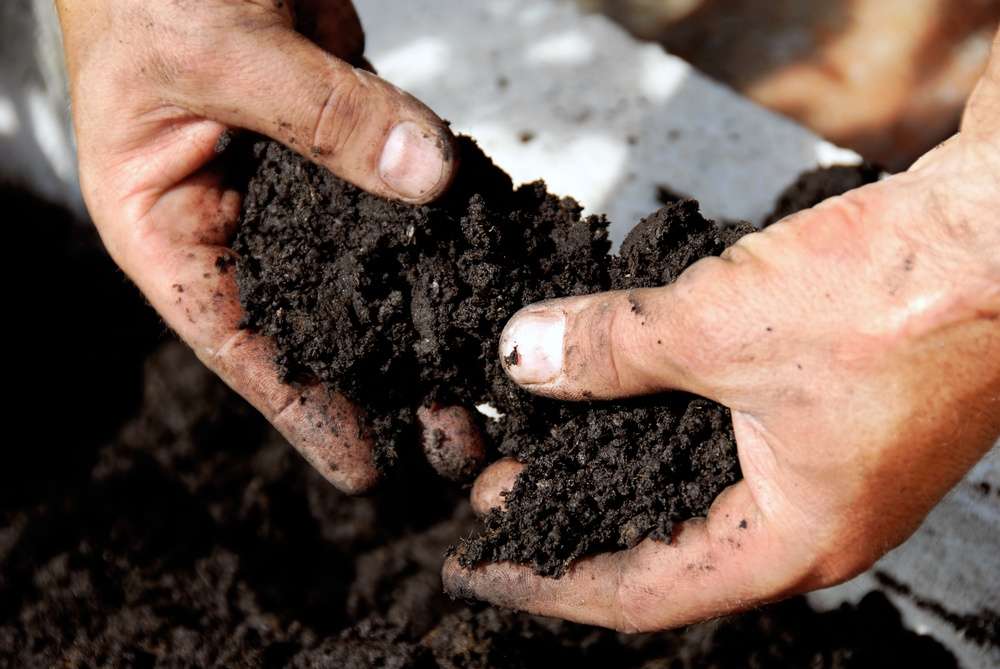
One way to correct this could be to mix a high-quality topsoil or compost into your flower bed. This will help improve the soil structure by introducing some beneficial microbial life. If your plants are already performing subpar due to poorly draining soil, it might be worth removing the plants and starting from scratch with a freshly tilled bed and a new layer of healthy topsoil.
However, if you have established plant material you don’t want to lose, you can try to till up the soil around the plants and get that fresh layer worked in.
When It’s a Low Spot
Another potential cause for water pooling around plants is a low spot. Water is always going to follow the path of least resistance so if you have a low area in the bed, water is naturally going to pool there.
If it’s one or two minor low spots, they can be filled in with soil to match the grade around them. However, if there’s a significant slope or dramatic low spots, re-grading could be necessary.
This is why addressing these issues before installing any plant material is always the optimal choice. You can make sure that landscape beds are properly graded and there are no significant drainage concerns before planting anything.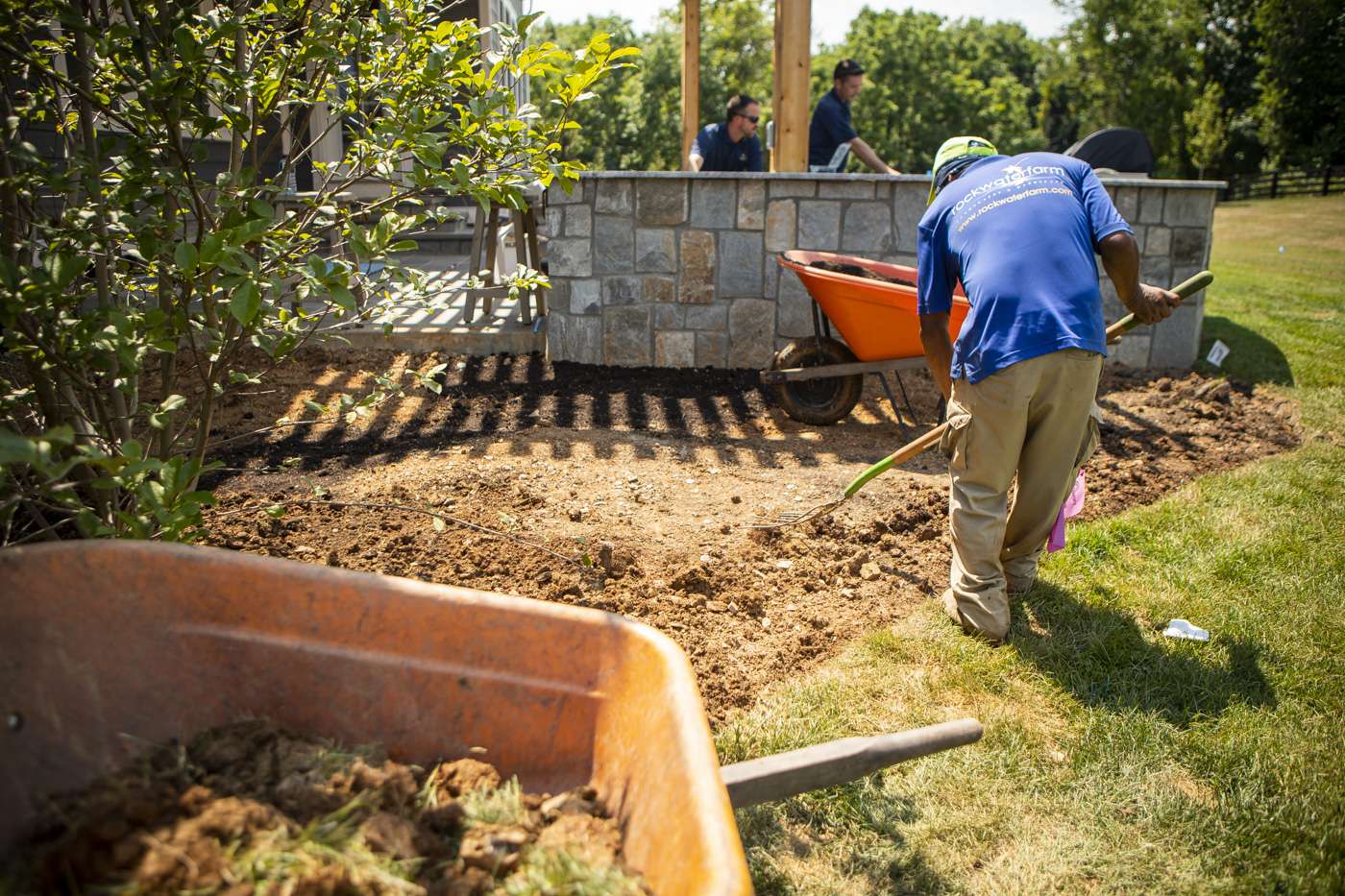
It Could Be Both
Keep in mind that pooling water is typically a combination of things. It could easily be a combination of poor soil and low spots that are causing your pooling issues. In fact, if the soil is well-tilled and healthy, low spots should still drain well. Ideally, you want to look at improving soil health and getting rid of low spots to have the best-performing plant beds.
Check Your Gutters
If you’re dealing with landscape bed drainage issues, you should also check to see if your gutters are contributing to the problem in any way. So often, homeowners have landscape beds around their home’s foundation, which is also where gutters tend to empty out.
Frankly, this is also a concern with water seeping into your home so it’s something you’ll want to look at fixing. It’s always ideal to direct water away from the home as much as possible. Sometimes people don't realize what an issue this is until there’s a major storm and water comes gushing out, perhaps washing away some of your plant bed mulch along with it.
Fortunately, if your water woes can be traced back to a gutter issue, it’s a relatively easy fix. You can simply have your gutters extended to empty out further from your home (and landscaping).
Ideally, it’s best to have your gutters directed to empty in an unused area of the yard (such as a far corner). The last thing that you want is to suddenly create an issue with water pooling in your yard. In that way, you’d just be replacing one problem with another.
If there is no good spot for water to drain to, you may need to consider a yard drainage solution such as some subsurface drainage or even a rain garden. This is something that your landscape contractor can discuss with you.
More Complex Drainage Issues
Sometimes landscape bed drainage issues cannot be as simply fixed. If there are significant grading issues or maybe your plant beds are in an area of the property where water does naturally drain to, then you may need a more complex drainage solution such as a French drain system or some sort of other subterranean fix.
If your drainage issues are truly that bad, it could be worth starting over. Your plant beds may need to be torn out, a drainage solution implemented, and then plants and new healthy soil are re-installed for a fresh start.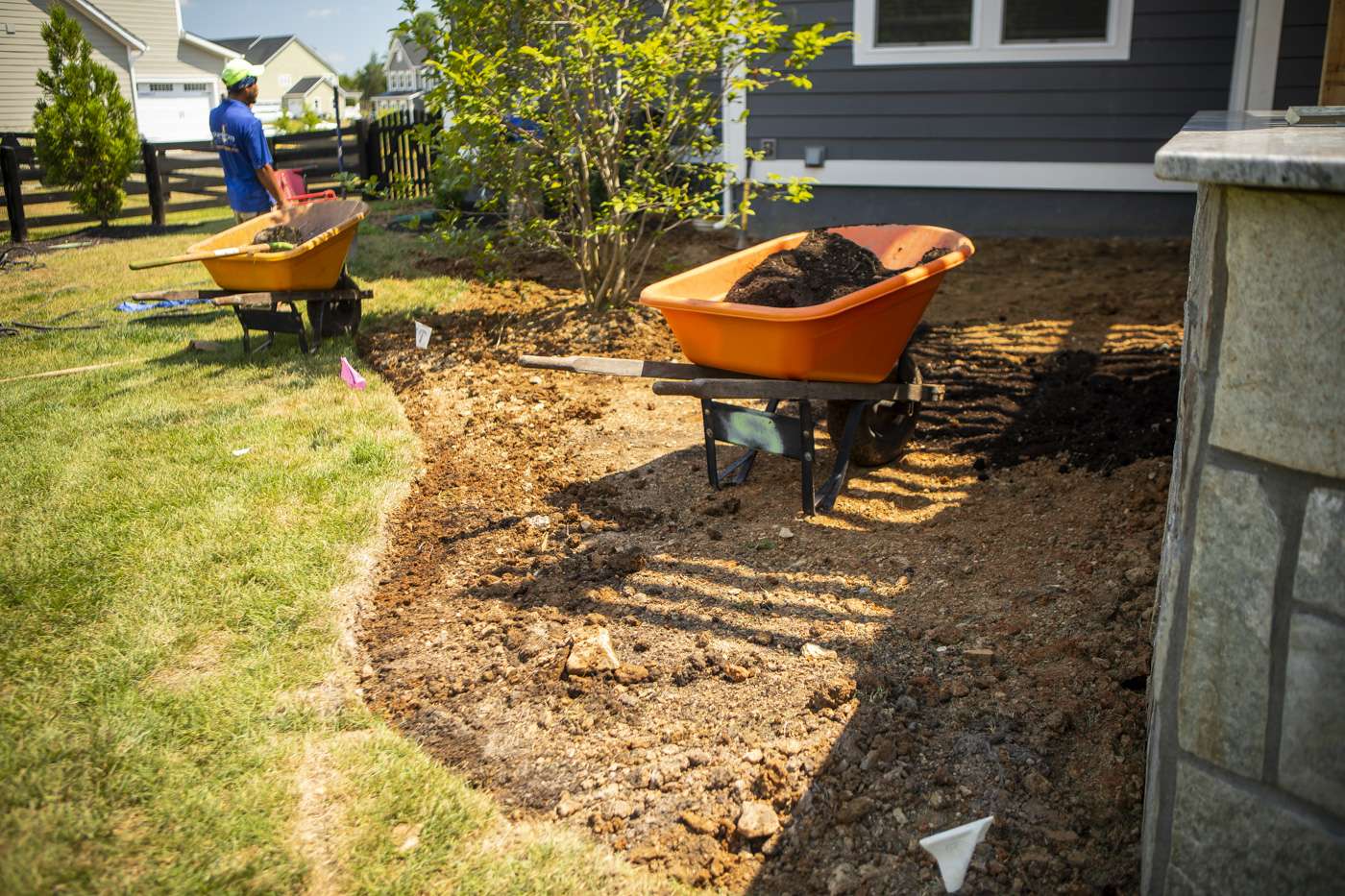
Sometimes starting over can also mean adding plant material that’s a bit better suited to the area in which it’s planted. If you do have a spot within the landscape that tends to get more water than others, you might want to install some water-loving plant material there. If you have plants that simply can’t take an excessive amount of water, there could always be problems.
Working with a Landscape Professional Who Will Think About Landscape Bed Drainage Issues
If you’re having plant beds installed for the first time, then you want to be sure that you’ve hired a landscape professional who is going to think about drainage ahead of time. This can save you from so many headaches in the long run and prevent these issues in the first place.
Even if you have existing plant beds that you’re looking to overhaul with new plants, you want to choose a landscape pro that will correct any drainage issues ahead of installing plant material. Then you won’t have to worry about water pooling around plants.
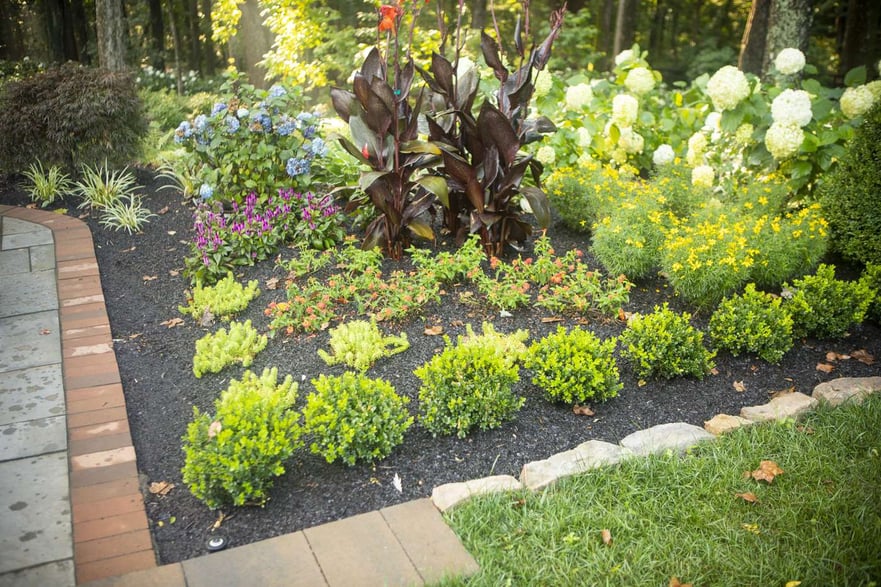
You also want to make sure that the landscape contractor you’re working with has the horticultural expertise to make the right plant selections. Some plants are always going to perform better in certain areas of the property than others and you want to feel confident that your landscaper is making wise choices for your specific property.
Choosing Rock Water Farm for Your Landscaping Needs
At Rock Water Farm, we’re always looking at the big picture when we work on landscaping projects in Northern Virginia. While some people might think of plant bed installation or new plant installation as a seemingly small landscape task, there’s still a lot of forethought and planning that goes into it. Drainage is a huge example of that. If drainage issues are not thought through ahead of time, they can cause you major headaches down the road (such as standing water in your landscape beds).
The best planning includes thinking through all potential scenarios as well as making the best plant choices. At Rock Water Farm, we have horticultural knowledge and expertise to guide you toward smart plant choices for your specific property. Going forward, we can also help you care for them properly so that you’ll get the most possible enjoyment out of your landscape.
When you make the wise choice to select a landscape professional who has your long-term best interest at heart, you can feel confident that you won’t have hassles and headaches to deal with later.
If you’re ready to get a landscape that you love at your Haymarket, Gainesville, or Bristow, VA home, talk to an expert, choose a solution that rocks, and get ready to see your landscape dreams take shape.



%20Facebook%202025-03-17%20at%201.11.44%20PM.jpg)
